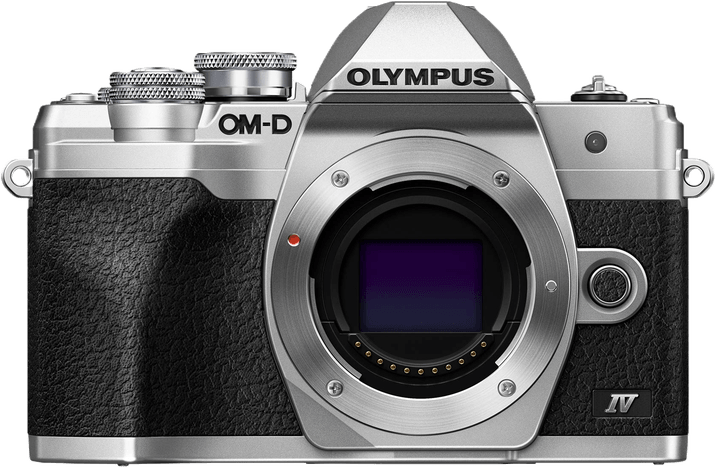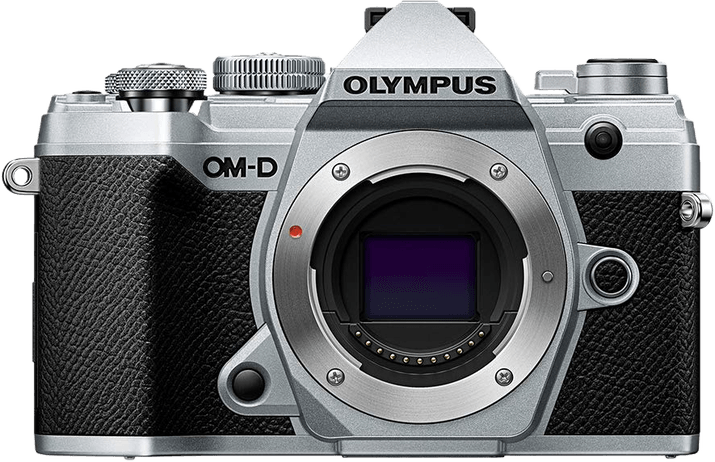Olympus OM-D E-M10 Mark IV vs OM-D E-M5 Mark III Comparison
Olympus OM-D E-M10 Mark IV

Olympus OM-D E-M5 Mark III

The Olympus OM-D E-M5 Mark III emerges as the winner with a score of 65/100, just 2 points ahead of the Olympus OM-D E-M10 Mark IV, which scored 63/100. Both cameras share the same mirrorless design and were released within a year of each other.
The E-M5 Mark III has the advantage of being slightly better in quality despite being an older model. However, the E-M10 Mark IV is lighter at 383g, compared to the E-M5 Mark III’s 414g, making it more convenient for travel and extended use.
Although the E-M5 Mark III outperforms the E-M10 Mark IV by a small margin, it is significantly more expensive, with a launch price of $1199 compared to the E-M10 Mark IV’s $699. This makes the E-M10 Mark IV a more budget-friendly option without sacrificing much in terms of performance.
Taking all aspects into consideration, the Olympus OM-D E-M5 Mark III is slightly better in terms of performance, but the Olympus OM-D E-M10 Mark IV offers a more affordable and lightweight option for those seeking a mirrorless camera.
Olympus OM-D E-M10 Mark IV vs OM-D E-M5 Mark III Overview and Optics
The Olympus OM-D E-M10 Mark IV outperforms the Olympus OM-D E-M5 Mark III in optics with a score of 63/100 compared to the E-M5 Mark III’s 60/100. Both cameras share several specifications, including 20-megapixel resolution, CMOS sensor type, TruePic VIII processor, Micro Four Thirds sensor size, Micro 4/3 lens mount, and image stabilization.
The E-M10 Mark IV has a higher DXOMARK sensor score of 73, which means its sensor performs better in terms of color depth, dynamic range, and low-light performance. This advantage allows the E-M10 Mark IV to capture images with more accurate colors and better detail in various lighting conditions.
On the other hand, the E-M5 Mark III has a faster shooting speed of 30 frames per second, double the E-M10 Mark IV’s 15 frames per second. This makes the E-M5 Mark III more suitable for capturing fast-moving subjects and action photography.
Considering these differences, the Olympus OM-D E-M10 Mark IV is the better option for photographers who prioritize image quality and sensor performance. The higher DXOMARK sensor score gives the E-M10 Mark IV an edge in producing superior images. However, the Olympus OM-D E-M5 Mark III is a more suitable choice for those who need a faster shooting speed for action or sports photography.
In comparing the two cameras, the E-M10 Mark IV takes the lead in optics quality and sensor performance, while the E-M5 Mark III excels in shooting speed. Ultimately, the choice between these two cameras depends on the photographer’s specific needs and preferences.
Olympus OM-D E-M10 Mark IV vs OM-D E-M5 Mark III Video Performance
The Olympus OM-D E-M5 Mark III outperforms the OM-D E-M10 Mark IV in video capabilities with a score of 91/100, an 8-point lead over the E-M10 Mark IV’s 83/100. Both cameras share common specifications, including 4K max video resolution and built-in time-lapse functionality.
The E-M5 Mark III excels with its higher max video dimensions of 4096 x 2160, compared to the E-M10 Mark IV’s 3840 x 2160. This difference allows the E-M5 Mark III to capture more detailed and sharper video content. Additionally, the E-M5 Mark III has a superior max video frame rate of 120fps, which is double the E-M10 Mark IV’s 60fps. This higher frame rate enables the E-M5 Mark III to produce smoother slow-motion footage and better action shots.
In contrast, the E-M10 Mark IV does not have any specific advantages over the E-M5 Mark III in terms of video capabilities. Both cameras share the same basic features, but the E-M5 Mark III surpasses the E-M10 Mark IV in key areas, such as video dimensions and frame rate.
Considering these factors, the Olympus OM-D E-M5 Mark III is the clear winner when it comes to video capabilities. Its higher video dimensions and frame rate make it a better choice for videographers and content creators seeking superior video quality and performance. The OM-D E-M10 Mark IV, while still offering decent video features, falls short in comparison to the E-M5 Mark III.
Olympus OM-D E-M10 Mark IV vs OM-D E-M5 Mark III Features and Benefits
The Olympus OM-D E-M5 Mark III emerges as the winner in terms of features with a score of 83/100, compared to the Olympus OM-D E-M10 Mark IV’s score of 70/100. Both cameras share several common specifications, including a 3-inch screen size, a screen resolution of 1,040,000 dots, touchscreen capabilities, flip screens, and the absence of GPS. Additionally, both cameras come equipped with WIFI and Bluetooth connectivity.
The E-M5 Mark III’s higher feature score indicates that it offers more advanced capabilities than the E-M10 Mark IV. While the specific advantages of the E-M5 Mark III over the E-M10 Mark IV are not detailed in the provided information, the higher score suggests that the E-M5 Mark III may provide users with additional features or improved functionality in certain areas.
On the other hand, the E-M10 Mark IV’s lower score does not necessarily mean that it is an inferior camera. It is possible that the E-M10 Mark IV excels in specific aspects not covered in the feature score or that it offers a more user-friendly experience for beginners. However, without further information on the specific areas in which the E-M10 Mark IV may outshine the E-M5 Mark III, it is difficult to determine its advantages.
Based on the feature scores and shared specifications, it is evident that the Olympus OM-D E-M5 Mark III is the more feature-rich option between the two cameras. However, potential buyers should consider their specific needs and preferences when choosing between these two models, as the E-M10 Mark IV may still offer advantages in certain areas not reflected in the overall feature score.
Olympus OM-D E-M10 Mark IV vs OM-D E-M5 Mark III Storage and Battery
When comparing the Olympus OM-D E-M10 Mark IV and the Olympus OM-D E-M5 Mark III in terms of storage and battery, both cameras score an equal 35/100. They share the same specifications for memory card slots, accepting one SD/SDHC/SDXC (UHS-II compatible) card each. Both cameras also utilize the BLS-50 battery type and offer USB charging capabilities.
The E-M10 Mark IV has a slight advantage in battery life, providing 360 shots per charge, compared to the E-M5 Mark III’s 310 shots. This difference allows the E-M10 Mark IV users to capture more photos before needing to recharge or replace the battery.
On the other hand, the E-M5 Mark III does not offer any advantages over the E-M10 Mark IV in terms of storage and battery capabilities. Consequently, the E-M10 Mark IV stands out as the better option for photographers who prioritize longer battery life. However, since both cameras have the same storage and battery score, the choice between the two will ultimately depend on the user’s preferences and other camera features.
Alternatives to the Olympus OM-D E-M10 Mark IV and OM-D E-M5 Mark III
Are you still undecided about which camera is right for you? Have a look at these popular comparisons that feature the Olympus OM-D E-M10 Mark IV or the Olympus OM-D E-M5 Mark III:

